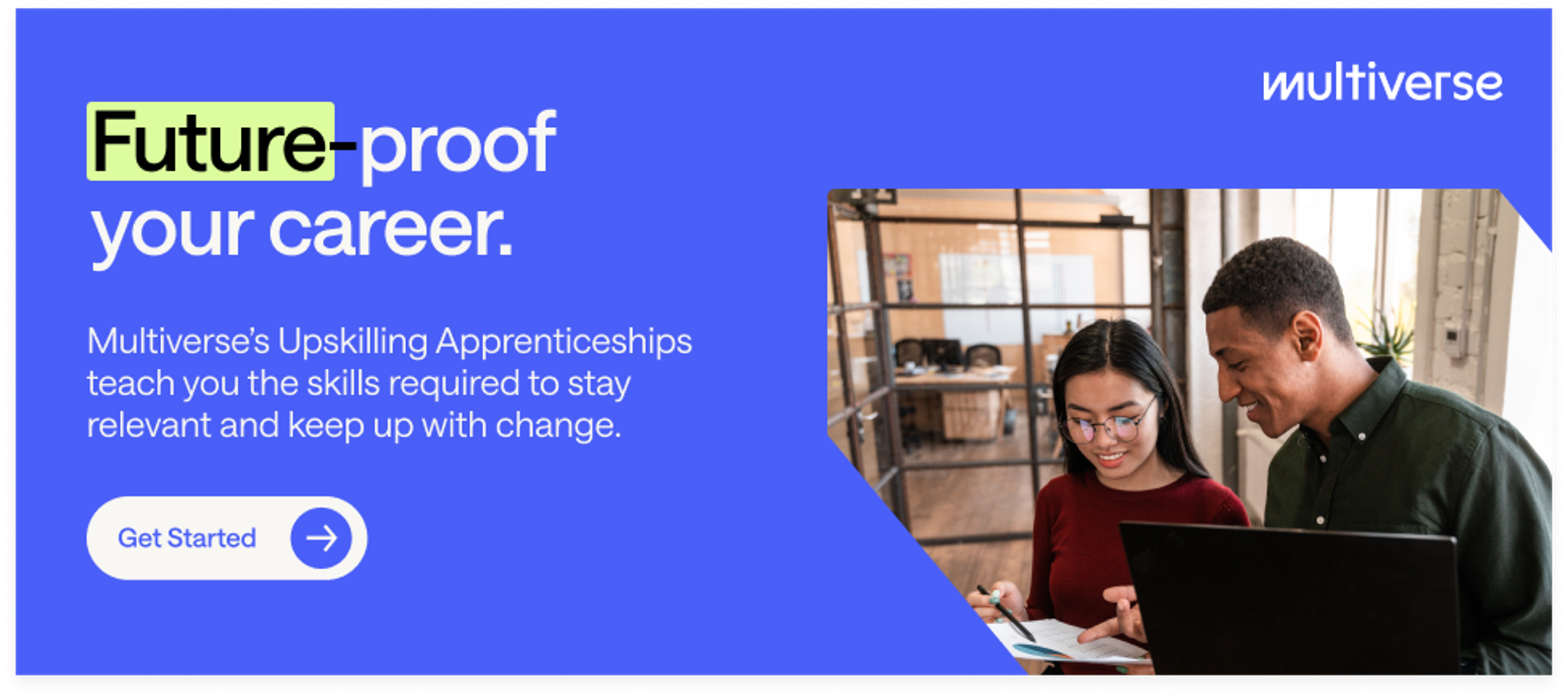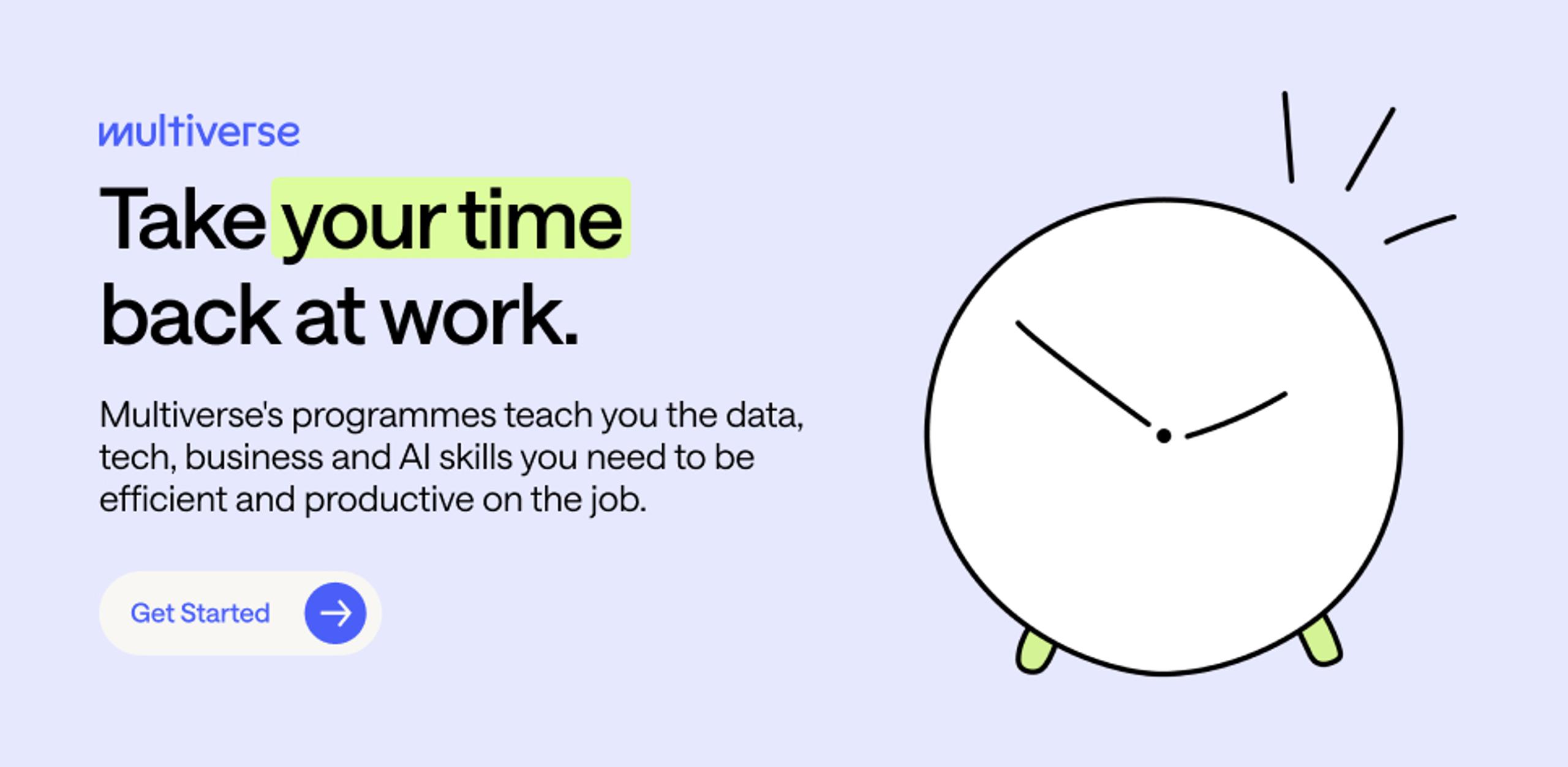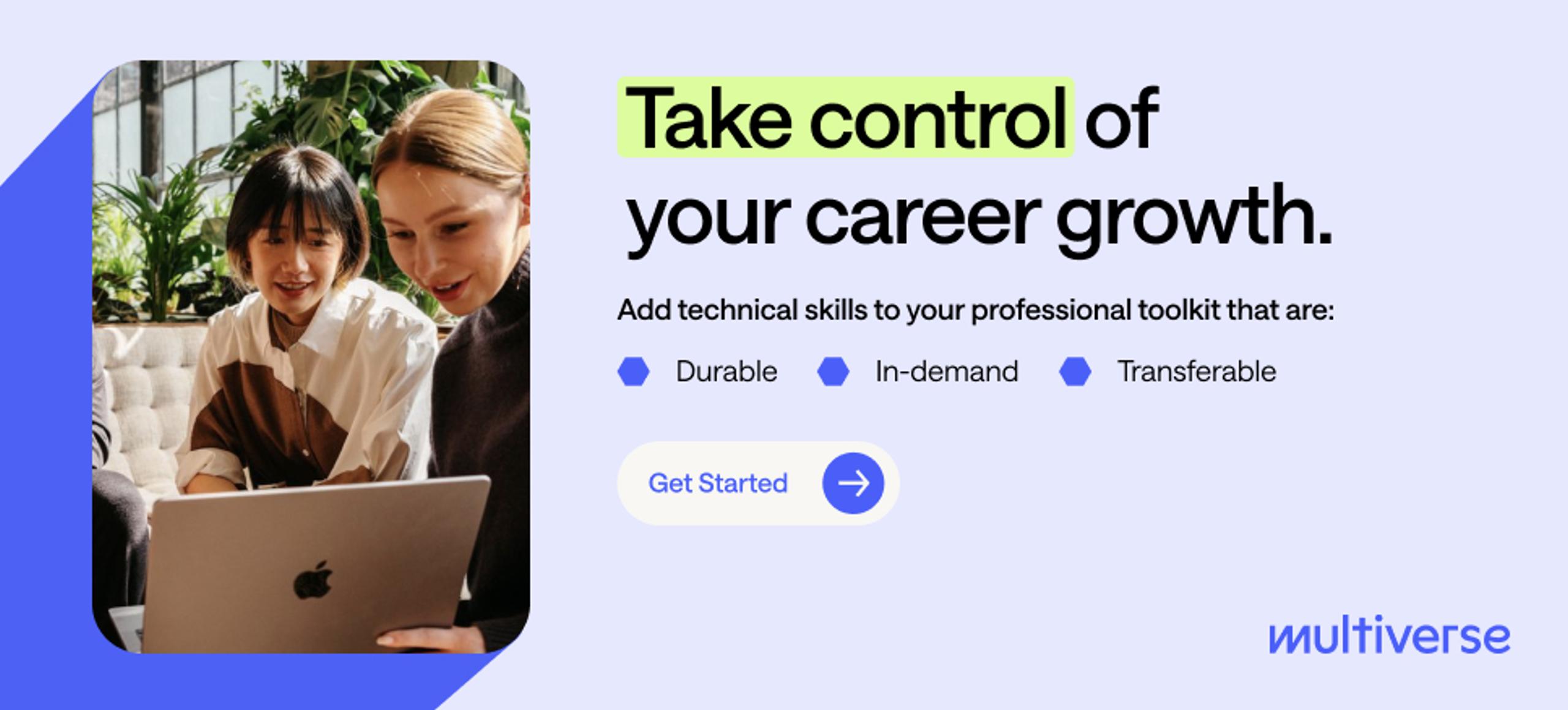Five years ago, the name “ChatGPT” would have left most professionals scratching their heads in confusion. And the thought of artificial intelligence (AI) platforms generating social media posts or having nuanced conversations with clients would have seemed, well, ludicrous.
Needless to say, things have changed almost overnight. Between 2023 and 2024, the percentage of organisations using AI(opens new window) leapt from 55% to 78%. This rapid adoption isn’t surprising when you consider the technology’s impressive versatility. From crunching huge datasets to managing projects, AI can assist with (almost) any operation.
But incorporating AI into your daily workflows isn’t as simple as downloading Microsoft Copilot onto every computer or sharing tutorials about AI image generation. Companies that adopt this technology can face many obstacles, from tight budgets to employee resistance. Effective change management is key to navigating these transformations successfully and getting your whole team on board.
This article covers essential strategies and resources for change management. By mastering this skill, you can help your organisation adopt AI and prepare for whatever comes next.
Understanding change management
The Association for Project Management(opens new window) defines change management as “the overarching approach taken in an organisation to move from the current to a future desirable state using a coordinated and structured approach in collaboration with stakeholders.”
In other words, change management helps individuals and organisations transition from one point to another as smoothly as possible. For example, a business might develop a change initiative to shift from barely dabbling in AI to fully embedding it in every part of its operations.
To outsiders, change management may seem a little over-the-top. Even unnecessary. After all, companies change things all the time — do you really need a special plan for it?
Absolutely, especially when you’re introducing new technologies or processes. Here are a few reasons why it pays to manage organisational change proactively:
- Improve communication: Even the most laid-back employees can feel stressed if you suddenly switch to a new system or tool. With a change management plan, you can keep everyone in the loop about the transition and help them understand their roles.
- Get employee buy-in: Employees often balk at change, especially if they believe it will create more work for them. Some workers may also fear that AI will eventually replace them, leading to anxiety or resentment. Change managers can help soothe these concerns by explaining the benefits of the new technology upfront. For example, your HR team’s resistance to change may evaporate when you demonstrate how AI can automate their scheduling tasks.
- Provide training: While some AI tools are intuitive, they all have a learning curve. Content generators, for instance, require careful prompting to get high-quality outputs. By planning ahead, you can help employees upskill and get comfortable with the software before it becomes part of their daily routines.
- Reduce disruptions: Launching a new tool without a plan is a surefire way to cause chaos and confusion. A structured approach enables you to introduce the transition gradually and troubleshoot any issues that occur along the way.
The impact of AI on organisational change
Some organisational changes barely register for most employees. For example, your IT team may be the only people who notice when your payroll system gets a software patch. But that’s not the case for adopting artificial intelligence.
This technology is almost always a catalyst for much larger transformations. That’s because it disrupts existing workflows and helps people step outside their traditional roles. Suddenly, a marketer with no data science training can analyse a ten-thousand-line spreadsheet with AI. And instead of spending hours sifting through client emails, a Sales Representative can automate replies.
While these changes can be empowering, they may also raise new challenges. For instance, employees who lack technical skills, such as prompt engineering, might not know how to use AI effectively. Workers may also need to learn new behavioural norms, such as checking AI outputs for bias and misinformation.
The solution? Investing in change management. Organisations that dare to reinvent their workflows and roles are 1.5 times more likely to meet their goals(opens new window) than those that stick to the status quo. AI can also help businesses reach new levels of efficiency and productivity.
Change management models in the context of AI
You don’t need to reinvent the wheel to manage change effectively. Here are several existing models that you can adapt for AI-driven transformation.
Lewin’s change management model
The psychologist Kurt Lewin(opens new window) developed one of the most popular change management frameworks. It includes three phases:
- Unfreeze: The organisation recognises that it needs to transform and let go of the status quo. During this stage, change managers challenge existing beliefs and persuade key stakeholders to accept the coming transition.
- Change: Leaders begin applying changes and upending outdated systems. They focus on overcoming resistance and helping team members adapt to the new world order.
- Refreeze: Change managers establish new policies to ensure that the transformation takes root.
Although Lewin invented this model in the mid-twentieth century, it’s still incredibly relevant today. Project Managers can “unfreeze” their organisations by researching the benefits of AI and pitching the transformation to the leadership team.
During the change phase, they can implement strategies like offering training sessions or piloting AI in one or two departments. And, after the successful implementation, AI usage policies could help cement the shift.
ADKAR model
In the 1990s, Jeff Hiatt created the ADKAR model(opens new window) to help businesses effectively manage change. It focuses on “guiding individuals through a particular change and addressing any roadblocks or barrier points along the way.”
This framework has five stages:
- Awareness: The individual understands the underlying reasons for the transition and the potential consequences of not evolving.
- Desire: They want to see the change implemented successfully and feel inspired to actively participate in it.
- Knowledge: They gain the knowledge and skills needed to support the transition.
- Ability: The individual has the capability to apply what they’ve learnt.
- Reinforcement: They commit to the change for the long term and alter their behaviour accordingly.
Change management professionals can win over employees in the awareness and desire phases by highlighting the advantages of AI. This could involve sharing case studies of competitors who have successfully used the technology or demonstrating how AI tools would fit their workflows. These practical examples can inspire curiosity instead of fear.
During the knowledge and ability phases, education is absolutely critical. Consider organising AI training workshops or bringing in outside experts to teach new skills. When employees feel empowered, they’re more likely to embrace change initiatives. Plus, professional development will help foster a company culture centred around continuous improvement.
Kotter’s 8-step change model
John Kotter(opens new window) created a more extensive model for building change capability within organisations. It has eight stages, including:
- Create a sense of urgency: Make people feel excited and passionate about the upcoming change.
- Build a guiding coalition: Assemble an A-team of change leaders who will shepherd the business through the transition.
- Form a strategic vision: Tell a convincing narrative about how the change will help the business accomplish its goals.
- Enlist a volunteer army: Bring together individuals who are eager to contribute to the change.
- Enable action by removing barriers: Develop solutions for any obstacles you encounter.
- Generate short-term wins: Celebrate achievements to build momentum and keep the team motivated.
- Sustain acceleration: Keep your foot on the metaphorical gas pedal after your early accomplishments.
- Institute change: Reinforce new behaviours and mindsets until old habits fade from memory.
Businesses often use Kotter’s framework for digital transformation. For example, your AI coalition might consist of Data Analysts, IT specialists, and communication experts. And your marketing department might happily volunteer to test a new AI tool.
Leading change in the age of AI
AI transformation projects can be highly disruptive, both mentally and operationally. You’ll need strong change management skills to integrate the technology while keeping everyone happy.
Organisational change management begins with strategic planning. This ability allows you to define a clear vision and goals that your team can rally behind. For example, your company might aim to use artificial intelligence to increase productivity by 20% and help employees learn new skills. You’ll also need to clearly explain how the transition will help reach these objectives.
Effective communication is vital, too. You can use many techniques to inform your team throughout the change management process, such as:
- Hosting one-on-one meetings with the managers and employees most impacted by the change
- Organising town halls to address the staff’s concerns and questions
- Sending out weekly updates via email or Slack
The best project management professionals also empower their teams. Encourage your employees to take ownership of organisational change initiatives by asking for their feedback and recommendations. You can also recruit early adopters to train their colleagues and troubleshoot problems. Small gestures like these can go a long way toward implementing change effectively.
An apprenticeship is the best way to gain and implement desired skills. Multiverse’s Business Transformation Fellowship teaches you how to identify opportunities for digital change in your existing organisation. You’ll also learn how to use the latest project management techniques and tools to drive transformation. These valuable skills can help you future-proof your career in the UK’s constantly evolving job market.
Throughout your apprenticeship, you’ll develop hands-on experience as you work on real projects for your current employer. The best part? The programme is completely free for apprentices, and you can continue earning your regular salary while you learn.
Case studies and real-world applications
Researching examples of successful change management can help you plan your own initiatives. Plus, case studies can help you win over stakeholders who may not be fully sold on your strategic vision.
At Marks & Spencer, for instance, AI is a significant focus in practically every department. The marketing team recently launched a new AI tool that offers personalised recommendations for wine(opens new window). The company also uses an AI platform to manage its supply chain(opens new window). What’s the secret to its success? Marks & Spencer rolls out changes gradually and partners with outside tech companies to help build its AI applications.
Small businesses have conquered the AI change process, too. Take Phoenixfire Design & Consulting(opens new window), for instance. This UK-based marketing firm uses budget-friendly AI tools like ChatGPT to generate content ideas. Founder John Fuller notes that the company had to overcome a learning curve on its transformation journey: “We got a huge bump in efficiency once we worked out the prompt engineering.” Now, Phoenixfire drafts projects with AI and finishes them with human creators.
Along with reading case studies, you can set yourself up for success by following these best practices for organisational change:
- Have a clear and inspiring strategic direction.
- Acknowledge employees’ anxieties about AI and offer resources to help them adapt.
- Keep up with the latest techniques by joining professional organisations like the Change Management Institute.
- Monitor progress with performance metrics, such as employee productivity and engagement with AI-generated content.
- Use community-based learning to build your team’s confidence and spark curiosity. For example, you might invite an early adopter to demonstrate how they use AI to edit videos or engage clients.
Guide your organisation (and your career) into the future
Successful change management doesn’t happen by accident, especially when AI is involved. You need the right attitude and strategies to guide your organisation through a huge transformation. And, of course, the skills to manage complex projects.
Strengthen your change management skills with Multiverse’s free Business Transformation Fellowship. This apprenticeship will help you develop the agile mindset and leadership capabilities needed to spearhead organisational change efforts. You’ll also learn how to use data to drive transformation as you complete real projects.
Take the next step on your change management journey by filling out our quick application(opens new window).








